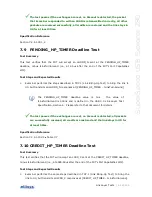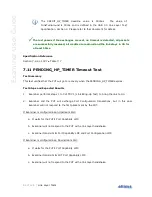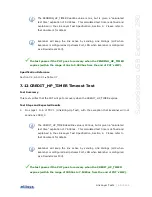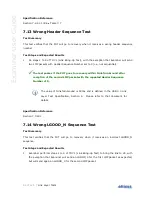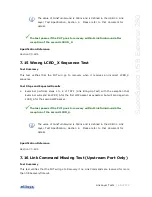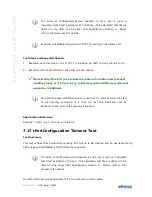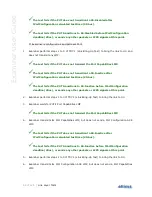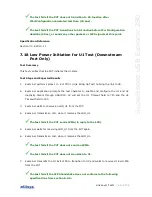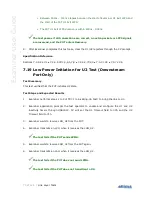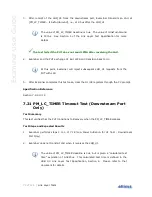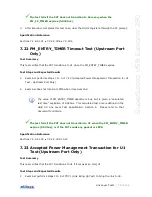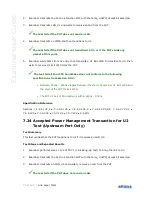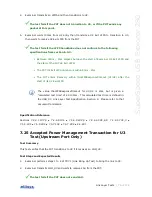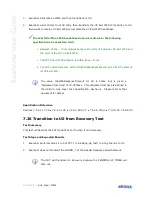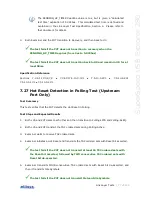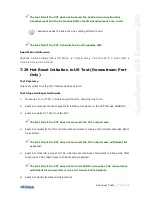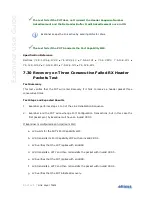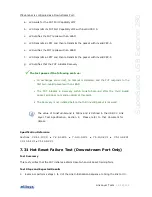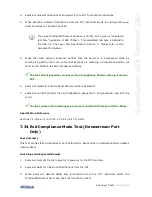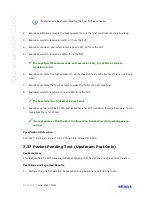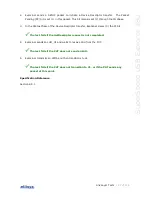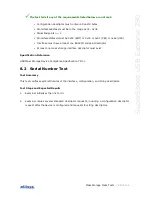
Link Layer Tests
| 75 of 124
S
u
pe
rS
pe
ed
U
S
B
Ex
pl
o
re
r
2
8
0
4.
Examiner transmits an LPMA and then transitions to U2.
The test fails if the PUT does not transition to U2, or if the PUT sends any
packet at this point.
5.
Examiner waits 100ms from U2 entry then transmits a U2 Exit LFPS to transition to U0,
then waits to receive U2 Exit LFPS from the PUT.
The test fails if the LFPS handshake does not conform to the following
specifications from section 6.9.2:
Between 300ns – 2ms elapses between the start of Examiner U2 Exit LFPS and
the start of the PUT U2 Exit LFPS.
The PUT U2 Exit LFPS duration is within 80us – 2ms.
The PUT enters Recovery within tNoLFPSResponseTimeout (U1/U2) after the
start of its U2 Exit LFPS
The value tNoLFPSResponseTimeout for U1/U2 is 2ms, but is given a
“calculated test time” of 2.0105ms. This calculated test time is defined in
the USB 3.0 Link Layer Test Specification, Section 4. Please refer to that
document for details.
Specification Reference
Sections 7.2.4.1.1#7,9 ● 7.2.4.2.1#4 ● 7.2.4.2.2#2,3 ● 7.2.4.2.3#2,8,9 7.2.4.2.7#2,3 ●
7.5.5.1#2 ● 7.5.5.2#2 ● 7.5.7.1#2 ● 7.5.7.2#2 ● 8.4.2#1
7.25
Accepted Power Management Transaction for U3
Test (Upstream Port Only)
Test Summary
This test verifies that the PUT transitions to U3 if it receives an LGO_U3.
Test Steps and Expected Results
1.
Examiner performs steps 1 to 4 of TD7.1 (Link Bring-Up Test) to bring the link to U0.
2.
Examiner transmits LGO_U3 and waits to receive LAU from the PUT.
The test fails if the PUT does not send LAU.

